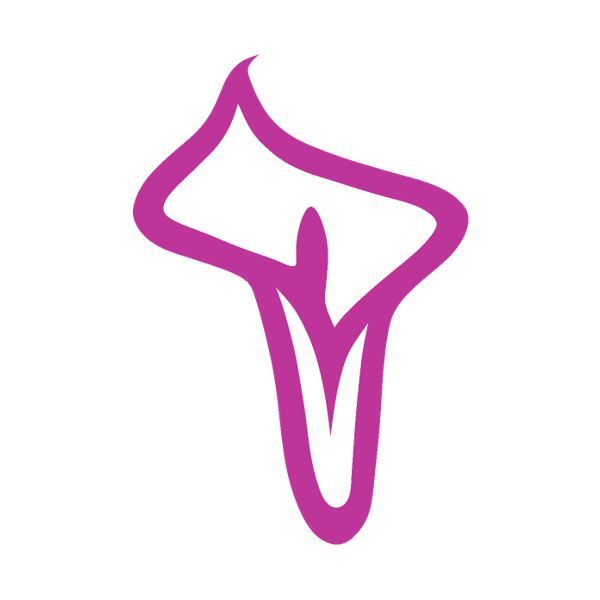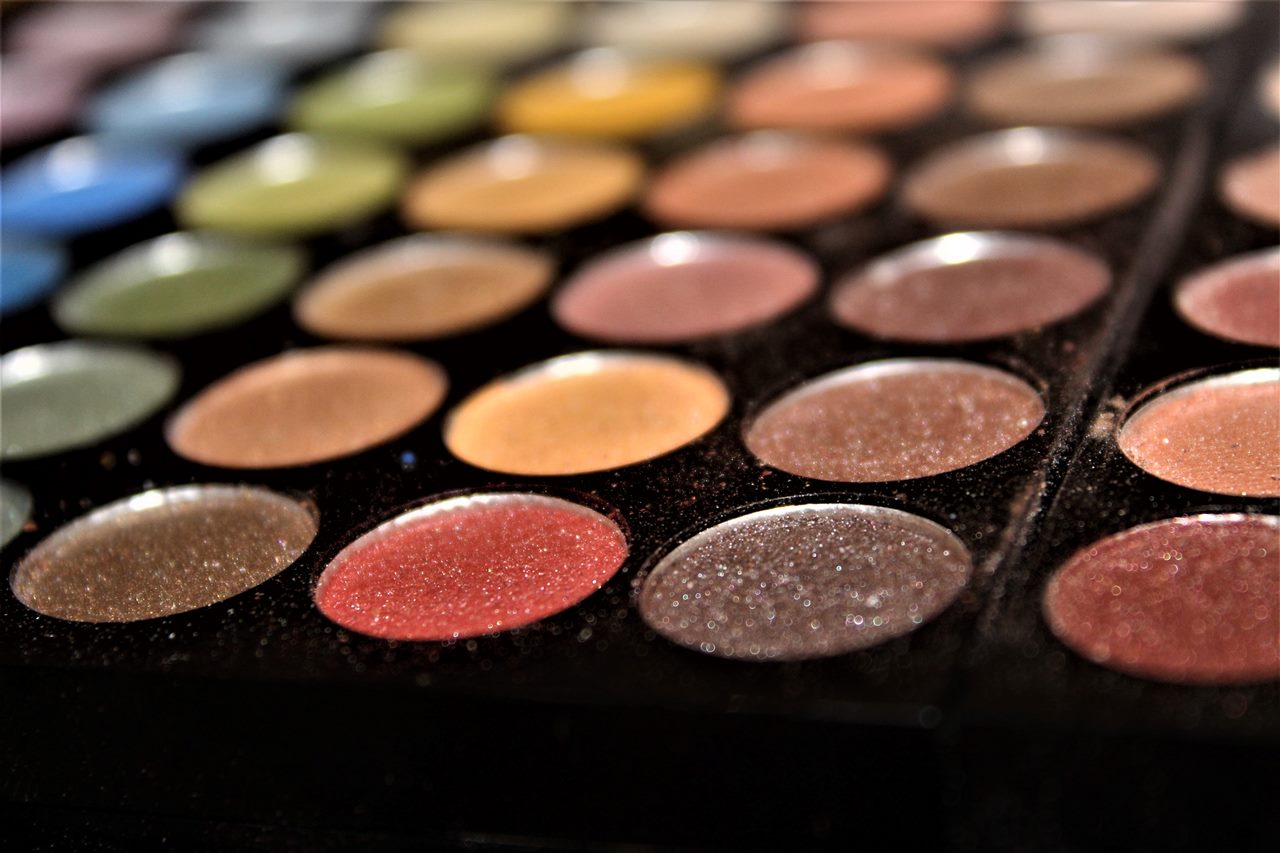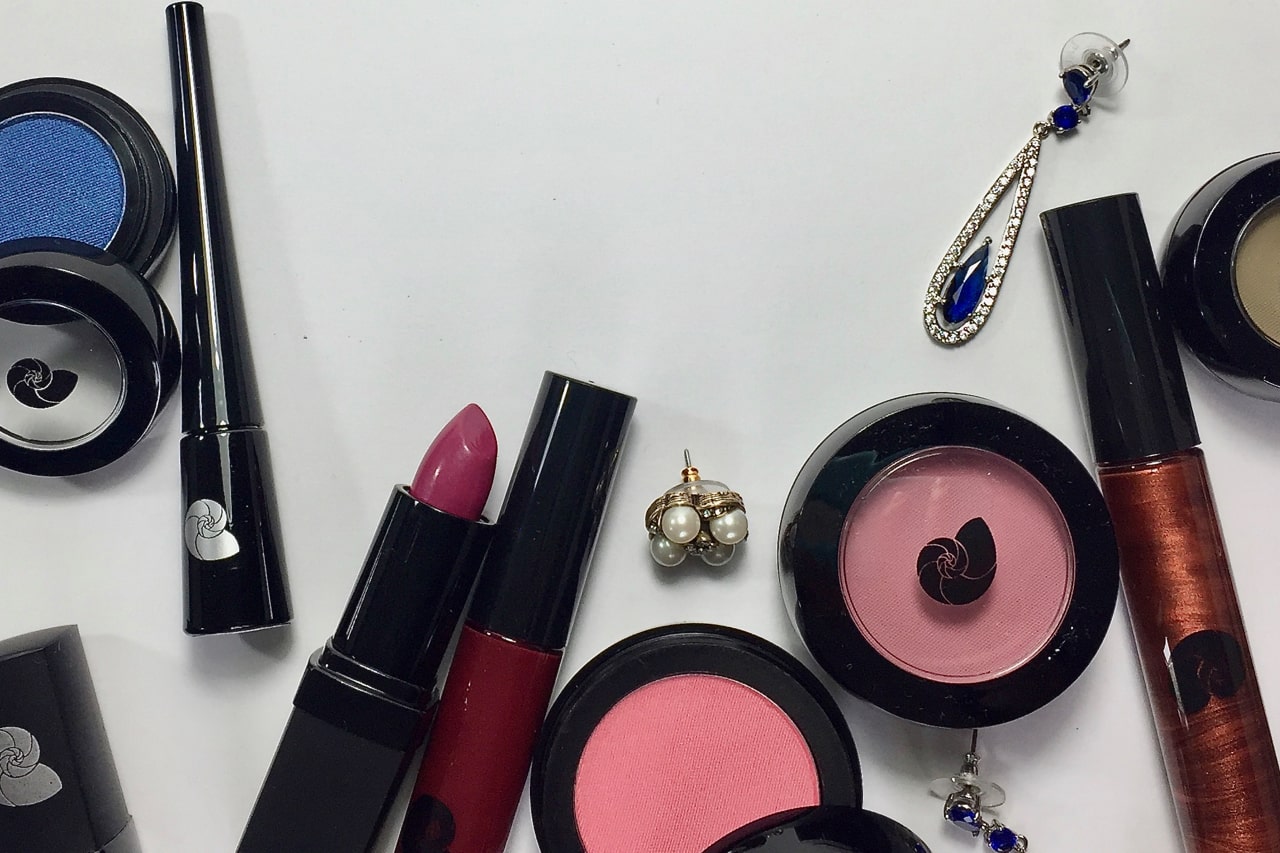by Florentina Mossou (The Netherlands)
Part 1 Introduction – Light, colour and shape
Overview
- Introduction – Light, colour and shape
- A Statement of Scale – Foundation for Vertical Yang
- A Statement of Dimension – Contour for Horizontal Yang
- A Statement of Curve – Blush and Lipstick for Vertical Yin
- A Statement of Detail – Highlighter and Eye Makeup for Horizontal Yin
- Creating Your Signature Makeup Look
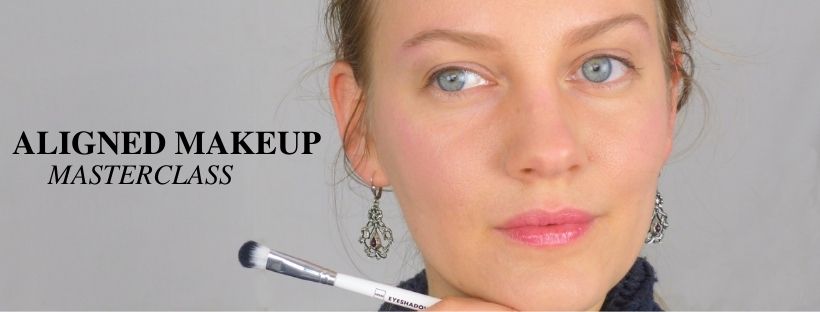
Welcome to the first part of the Aligned Makeup Masterclass! In this Introduction, we’ll discuss the ingredients of signature makeup. There will be some recap as we look into the relationship between the four Seasons and skin texture. And we’ll go into the basics of the Align system, and how yin and yang relate to makeup.
Signature makeup – focus on the eyes
The best makeup brings out who you are on the inside. The eyes are the gateway. Therefore, signature makeup needs to emphasise your eyes. Yet emphasising eyes is only sometimes done by actually putting makeup on them. For many, if not most, the more effective (and beautiful) approach is with other types of emphasis.
Why is this? Because of the magic ingredient of beauty: harmony. Visual harmony is a result of the relationships between light, colour and shape. Both elusive and powerful, harmonious makeup brings every feature of your face into breathtaking balance with every other feature. The viewer can focus on your eyes without distractions, and feels comfortably supported to remain there.
Harmonious makeup works differently for every person, every Season and every body type. It means that some products, textures and applications are more suited to you than others. I call this aligned makeup. This Masterclass will teach you how to find your version.
The Three Pillars
How can we find harmony? Harmony comes from three ingredients. I call them the three pillars of style: colour, body type and essence. All three of these together determine which makeup products, colours, textures, formulas, application techniques and amounts work for you.
Colour is first pillar and the most transformative. Our reactions to colour are immediate and emotional. Colour analysis needs no introduction on this website. If it does, congratulations, you’re about to discover something amazing! I recommend you visit the home page, browse around the rest of the site, and then come back. I’ll wait here…
Below, we’ll recap the qualities of the four main Seasons when it comes to makeup.
Body type, the second pillar, is about your body proportions and underlying shapes. It’s a result of patterns of yin and yang. In this post, we’ll have a basic introduction of Align to explain how that works.
Essence is our third and final pillar. We won’t consider it in this masterclass, as this topic is far more abstract and personal. With my Inspire clients (Inspire is my in-depth style programme, currently in beta), we work with seven ‘pillars’ rather than three. Here, Essence is the visual expression of your highest presence, the ‘Face of Consciousness’ if you prefer mystical terms. To everyone else, you can consider Essence to be your personal taste.

Colour
With regard to makeup and the colours of the Seasons, my teacher and friend Christine Scaman from 12Blueprints has written a four part series of called ‘The Best Skin Finish for’ , in which she explains the best texture and products for each of the four main Seasons with details that apply to all 12 Seasons. She has reimagined them for this website, in a series called ‘The Right Skin Polish for’ [part one, part two, part three and part four]. I’ve always thought these blog posts were particularly brilliant, among the most unique and insightful content on the internet on this topic. The information in these posts is the starting point for this masterclass.
Four examples as we begin to introduce the relationships between light, colour, texture, and shape:
Spring
“The skin is dewy, adapted to the natural texture to create an impression neither oily nor dry but somewhere in between. The features are fresh, lively, and distinguished from the skin by being colourful, moist, and vibrant.”
Spring Light: petal – True Spring: white currant – Bright Spring: cherry
Summer
“The skin is soft and dry, setting the scene for gentleness and graduated muting. The features are blended into the skin with colours that create a soft flow instead of sharp definition. As colours flow into each other as hazy mists, the line between one colour and the next is unclear.”
Light Summer: peach (petal to pearl) – True Summer: cotton (paper to pearl) – Soft Summer: flannel (paper to flannel)
Autumn
“Autumn looks great in contouring, setting up lowlights. The features are defined from the skin by colours that are warm, deep, and velvety, with metallic glints as highlights.”
Soft Autumn: Velvet – True Autumn: suede – Dark Autumn: leather
Winter
“The skin is calm and even in colour and texture. Cool, bright colours and big distance between light and dark create a clean canvas, clear features, and healthy skin tone. The sense of where one colour ends and the next begins is not in question.”
Dark Winter: vinyl – True Winter: ceramic – Bright Winter: silicone
[swoons]
[forgets what she was doing]
[wants to go upstairs to play with the luxury drapes again]
[refocuses]
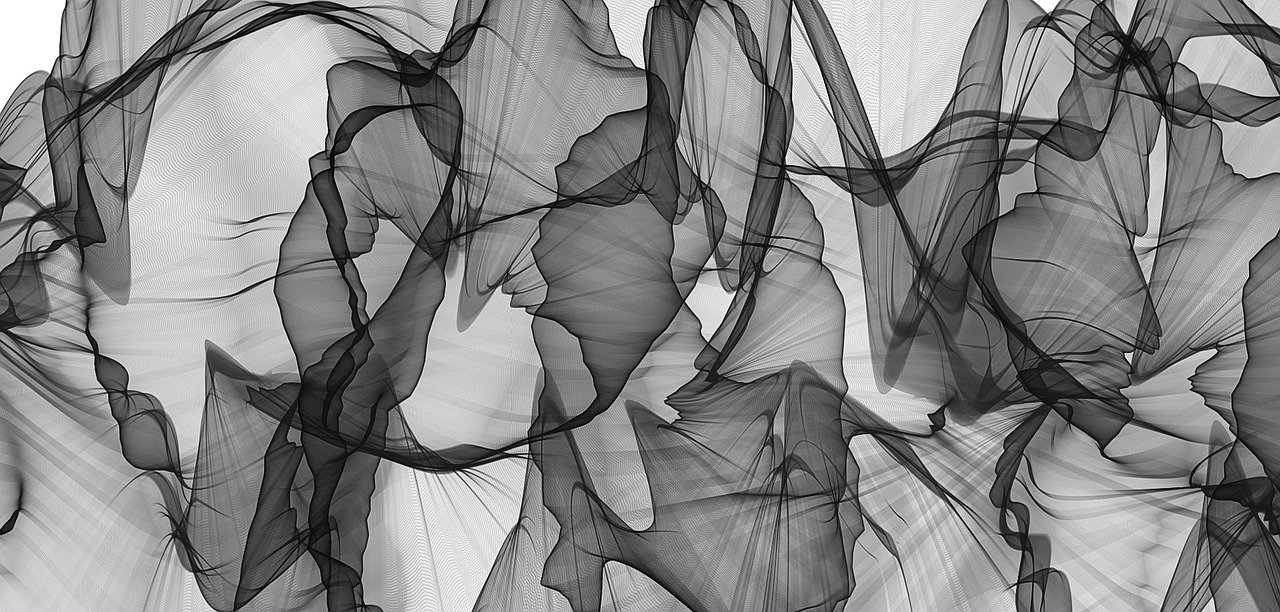
Align
The second pillar is line, expressed through body type. An even better word would be ‘body pattern’. The word body type seems to imply that this is one shape, probably an inheritance from the hourglass, pear, rectangle concept. The word pattern signifies there are multiple options for the actual shape.
No body type has a prescribed mould that they are expected to slot into. Unlike those toddler’s toys where the square block can only pass through the square hole, and doesn’t fit through the triangular one, Align works within each individual’s shape and features. Everyone is different, and each analysis explores a new way of expressing body type through clothing and makeup.
This is also why it’s hard to find your body type by matching it to pictures. Once you look hard enough, everybody starts to look alike. As Neil Gaiman once put it in his novel Stardust: ‘the usual complement of bits.’ All of us have two eyes and one nose, after all.
Yin and yang
My preferred approach to decoding body line patterns is using yin and yang. Align style analysis is a new system I developed to approach body types from a scientific basis, drawing on my experience as a biological scientist, working with morphology and body shapes.
In a nutshell, Align is based on four dimensions: vertical yang, horizontal yang, vertical yin and horizontal yin.
The first step is relating yin and yang to shape. (They don’t refer to gender, behaviour, or sexual orientation). Yin is small and rounded, yang is large and straight. Apply these to the horizontal and vertical dimensions of a human body, and you have four dimensions.
- Vertical yang – the vertical dimension is large and straight, so the body with vertical yang influence is tall.
- Horizontal yang – the horizontal dimension is large and straight, so the body with horizontal yang influence is large with a strong bone structure.
- Vertical yin – the vertical dimension is small and curved, so the body with vertical yin influence is short with curves.
- Horizontal yin – the horizontal dimension is small and curved, so the body with horizontal yin influence is narrow with delicate curves.
Body patterns
Pure forms of these four dimensions do not exist. It’s easy to imagine the cartoon, the pen and ink drawing of these figures, but you will never meet them walking down the street. They are an oversimplification. A black-and-white, whereas in reality there are many shades of grey.
With real people, combinations of these four dimensions form body types. Everybody has a primary, secondary and tertiary influence that together create his or her body type.
There are sixteen body types in total:
- Captivating
- Celestial
- Dignified
- Distinctive
- Dynamic
- Evocative
- Expressive
- Graceful
- Imperial
- Intricate
- Liberal
- Luxuriant
- Majestic
- Mysterious
- Striking
- Transcendent
For each type, you can find examples of people and clothing items on Pinterest here. These are stylised images. Clients receive galleries of real-life clothes and accessories to learn their shapes and proportions.
In this Masterclass, we won’t consider the Align body types and focus on the four main dimensions instead. Most people are capable of recognising their primary influence, so that is the best starting point for signature makeup.
Which is my primary dimension?
- If you are tall, with long legs, large hands and feet, that’s the vertical yang dimension at work. Having a stretched out quality to your body is a sure sign of vertical yang.
- If you are medium to tall in height, with strong joints, bone structure and musculature, you are likely to have horizontal yang in your presence. Also, your hands and feet are likely to be somewhat larger than average.
- If you are small in height, with curvy outlines throughout your body, whether it’s your hipline, cheekbones or the outside edge of the palms of your hands, you are likely to be under the influence of vertical yin.
- If you are small in height, with small bones and a narrow ribcage, then it’s very likely that you have horizontal yin in your body. Horizontal yin typically has large eyes, and small hands and feet.
Please keep in mind that these will not fully describe any real person. That’s where your secondary and tertiary influences come in. For our Masterclass, this primary is the one we will work with.
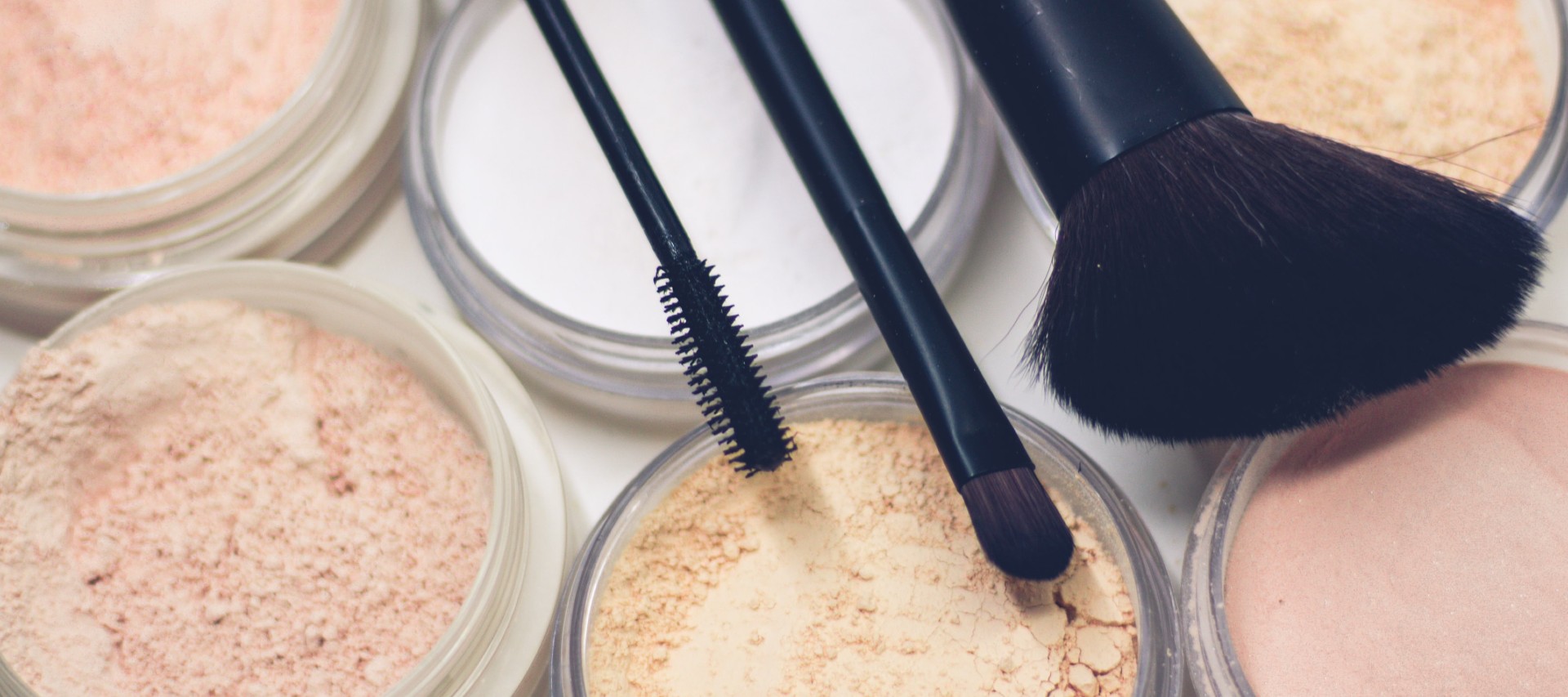
The yin and yang of makeup
Now that we have an overview of the four dimensions of body types, let’s see how this translates to makeup. Depending on the relationship between shape and light, the four dimensions have different products that are best for emphasising harmony.
- Foundation is the signature makeup product for vertical yang, as it helps to emphasise large scale.
- Contour is the signature makeup product for horizontal yang, as it helps to emphasise the three-dimensionality of their facial bone structure.
- Blush is the signature makeup product for vertical yin, as it helps to emphasise curve.
- Highlighter and eye makeup are the signature makeup products for horizontal yin, as these helps to emphasise detail.
In the upcoming posts, we’ll see why each of the four dimensions has these signature makeup products, starting with foundation from the perspective of vertical yang. We will also discover what happens when you add colour into the mix….
Note: Unfortunately, at this moment my website is not online due to severe technical issues. The links below are not active. I’m trying to get it fixed as soon as possible! Meanwhile, I can be reached via email at florentina@callastudio.nl.
